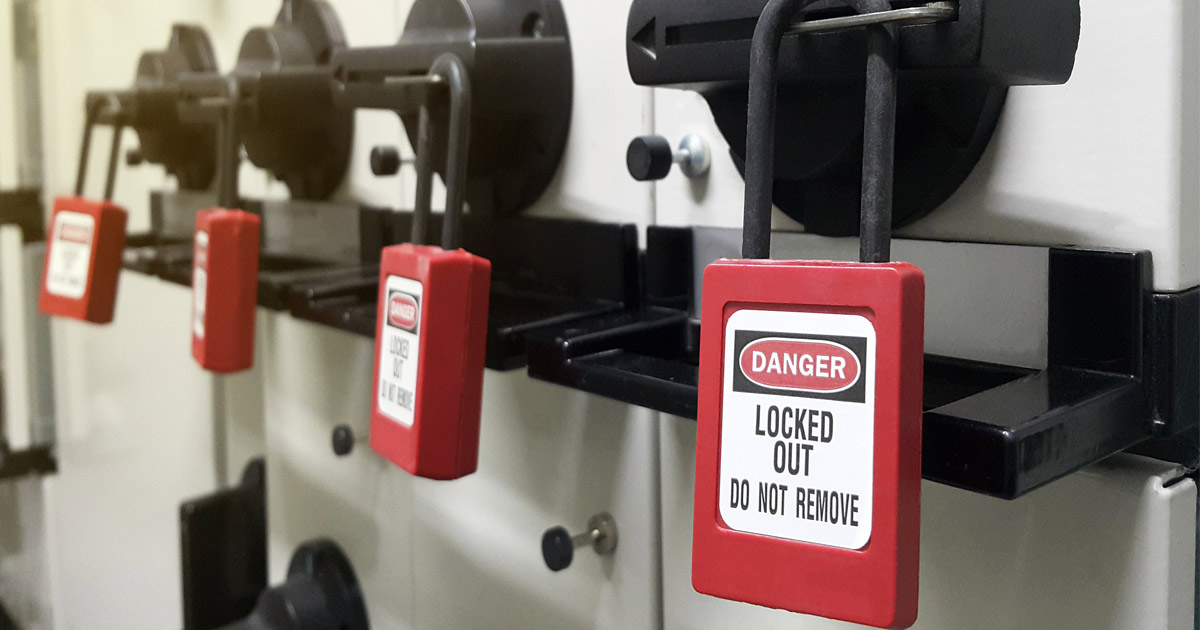Industrial equipment comes with certain hazards for those who operate them in factories and plants, and they can also be dangerous even when they are not in use. Lockout/Tagout (LOTO) procedures prevent power sources from starting up unexpectedly and allow them to be safely inspected and repaired as needed. Companies that do not take LOTO seriously or fail to enforce important safety protocols run the risk of serious machinery accidents.
The Occupational Safety and Health Administration (OSHA) requires formal LOTO procedures to protect private sector workers when machinery is not in use. On a state level, the New Jersey State Department of Labor and Workforce Development and Department of Health and Senior Services oversee occupational safety requirements for public sector employees. These organizations help keep public and private workplaces accountable for LOTO best practices to ensure workers remain safe around dangerous equipment.
Why are Lockout/Tagout Procedures Necessary?
The OSHA Lockout/Tagout Standard requires that companies maintain and enforce practices to stop and isolate equipment from its energy source and prevent the release of potentially dangerous energy while equipment is being serviced. Even if machinery and equipment are not being used, if they remain attached to an energy source, such as natural gas, compressed air, steam, or electricity, there is still the potential for an accident. Formal procedures exist to prevent machines from starting unexpectedly and injuring workers. While LOTO programs vary by workplace based on the type of equipment and power sources involved, most contain the following elements:
Clear Equipment Procedures: Every piece of machinery should have detailed instructions that describe the exact location of the machine, any energy sources connected to the machine, and precise instructions for shutting down and restarting the machine. Language should be clear and concise to prevent any confusion and ensure every safety step is completed.
Notify Employees Before Inspections or Maintenance: Without good communication, LOTO policies are ineffective. When repairs are needed, all affected employees should be notified on how long machines will be down and how temporary outages may impact their job tasks.
Properly Shut Down Equipment: Instructing workers to disconnect the machine leaves too much room for interpretation. Employers should provide detailed, step-by-step instructions for how to safely turn off machinery.
Cut Off Main Energy Sources: Detailed instructions at this point are equally as crucial. It should be assumed the person completing this task is doing it for the very first time. Management should explain the order of procedures for safely disconnecting electricity, water, gas, steam, compressed air, and other energy sources prior to LOTO.
Secure Secondary Sources of Energy: After disconnecting primary energy sources, some machinery may still contain a secondary source that also needs to be addressed. This might be a spring mechanism where tension needs to be released, or trapped steam or fumes that need to be vented before equipment can be inspected or serviced.
Confirm the Lockout: Once primary and secondary energy sources are shut down, the employee should restart the equipment to verify the lockout is complete. Before this happens, all nearby workers should be stationed a safe distance away from any position where they could be injured. If all power sources are disengaged, all switches should be turned off. At this time, sturdy locks and bright, highly visible tags should be placed on secured equipment warning staff that a machine is on “Lock-Out” and must not be operated under any circumstances.
Be Consistent Throughout Shift Changes: Without consistent LOTO procedures, shift changes leave room for dangerous mistakes. Machinery should remain in LOTO status across shift changes. Workers who oversee LOTO procedures for each shift should communicate with each other and be present when tags and logs are installed or removed.
Restore the Equipment: After maintenance is complete and the space is cleared of tools and other temporary equipment, machinery can be powered up again. Like each of the other steps in the LOTO process, detailed instructions for this step should be provided in the correct sequence.
Reevaluate LOTO Procedures on a Regular Basis: Workers’ lives depend on a sound LOTO safety program. As job tasks evolve or new pieces of equipment are introduced, procedures will inevitably change. All safety procedures should be routinely reviewed and updated as needed.
Enlist Employees to Build a Solid LOTO Program: Employees working with equipment every day are often the best resource to learn how the job site can be made safer. Employers should empower their team to speak up when they have concerns and offer suggestions on how to make the workplace safer for everyone involved. To guide employers in an effective LOTO program, OSHA provides an extensive online tutorial covering everything from employee training to recommended materials and hardware.
Designate and Train LOTO Employees: Every employee impacted by LOTO procedures needs proper training. The United States Department of Labor recognizes three different categories of workers that require specific training depending on their exposure to equipment:
- Authorized employees should be trained on the risks of various energy sources, including how and where energy is derived, its potential force, and how to isolate and control it.
- Affected employees should be trained on how and why energy control is essential, as well as steps involved in that process.
- Other employees working near this equipment should know emergency steps to control energy and not to engage equipment that has been tagged as not in operation.
At the minimum, any worker employed in a location that utilizes dangerous machinery should have some knowledge of LOTO protocols and recognize the signs when machinery is not safe to operate.
What Should I Do If I was Hurt While Inspecting a Machine?
According to OSHA, an estimated three million workers are injured or killed while operating heavy machinery every year in this country. Workers’ compensation data includes reports of burns, nerve damage, head injuries, broken bones, amputations, and other injuries. Those who are fortunate enough to survive traumatic workplace accidents are often left with permanently disabling conditions that keep them from returning to work. Physical and mental pain is often compounded by financial hardship. An experienced workers’ compensation lawyer can evaluate the case and recommend the best legal course of action. There are important steps workers can take to increase their chances of receiving the compensation they deserve after a work injury:
- Seek medical attention: An injured worker should call 911 if an injury appears to be serious. Otherwise, hurt or ill workers should see a doctor as soon as possible.
- Document the accident scene: Photographs and witness accounts help to establish what went wrong.
- Report the injury to your employer: Most companies have standard procedures for reporting job-related accidents. Waiting too long to report an injury leaves room for doubt as to whether the worker’s injuries occurred on or off-the-clock.
- Gather documentation: A worker should collect all medical bills, accident photos, injury reports, and witness statements related to their injury to prepare for the claims process.
- Contact a lawyer: A lawyer can assess whether the injury falls under workers’ compensation guidelines.
Employers are expected to provide a safe workplace for every member of their team, which includes making sure dangerous equipment is safely maintained when not in use. A lawyer protects the rights of workers who become hurt or sick on the job, which includes handling workers’ compensation claims and filing appeals to help injured workers receive the financial compensation they deserve.
Cherry Hill Workers’ Compensation Lawyers at Pietras Saracino Smith & Meeks, LLP Fight for Workers Injured on the Job
Heavy machinery injuries are hardly the only risks facing workers in New Jersey. Fortunately, injured employees have an ally in the Cherry Hill workers’ compensation lawyers at Pietras Saracino Smith & Meeks, LLP. Our legal team will carefully assess every detail of your accident and medical care so you can focus on your recovery. Call 856-761-3773 or submit an online inquiry for a free case review today. Located in Cherry Hill, New Jersey, we represent clients throughout South Jersey, including Pennsauken, Cinnaminson, Camden, Maple Shade, and Delran.













